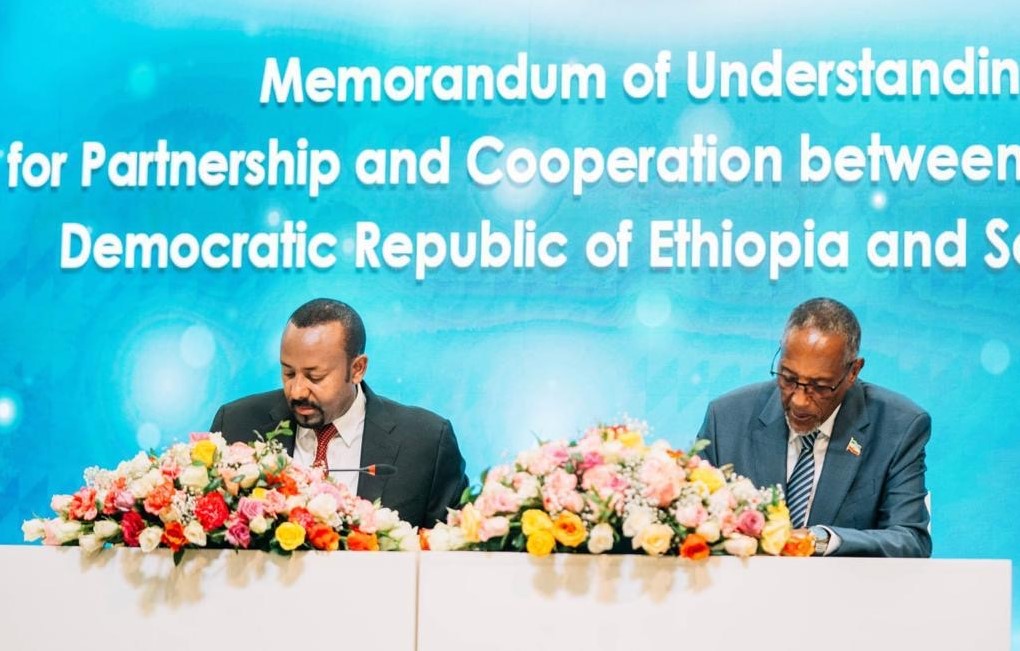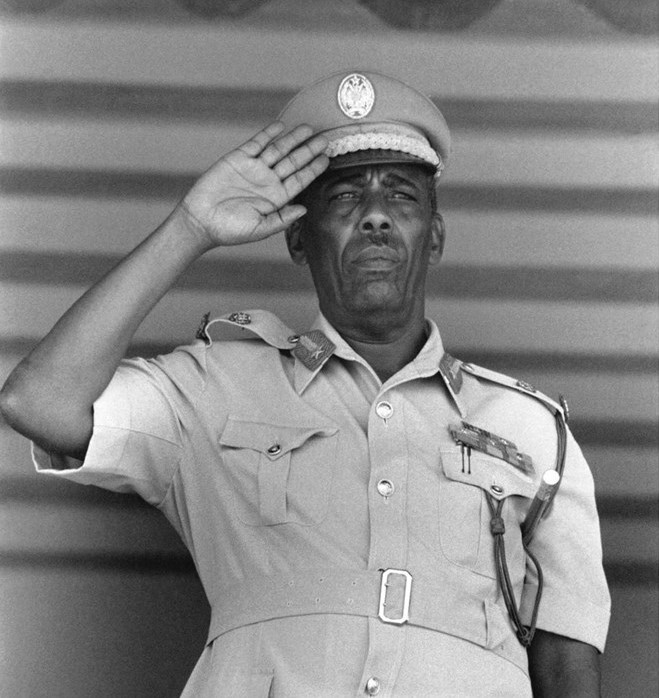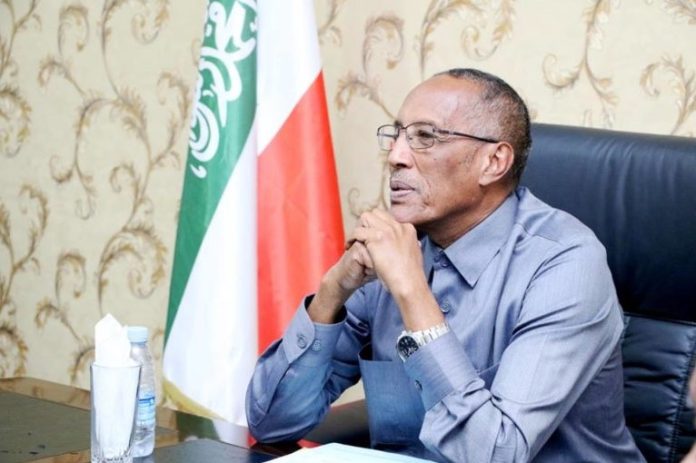Introduction
This article is the second installment of the wider “Understanding” series, aimed at providing the history behind and context to the worlds ongoing conflicts and issues, in order to increase your understanding of modern world issues.

This article goes over the recent history of Somaliland, an unrecognized but de-facto independent state in the Horn of Africa, which Somalia claims as its territory. Somaliland has become particularly relevant as of late due to the Memorandum of Understanding signed between Ethiopia and Somaliland, which will see Ethiopia as the first country to recognize Somaliland’s independence.

Colonization of the Horn
Somaliland’s modern borders result from the colonial powers of the region. Historically, Somaliland was a British colony, known as British Somaliland, whereas the bulk of Somalia itself was an Italian colony, known as Italian Somaliland.
Both British and Italian Somaliland experienced brief periods of unification prior to independence. First during WW2 when the Italians invaded British Somaliland and incorporated it into Italian East Africa, and again from 1941-1950 when the British took back British Somaliland, and pushed the Italians out of Somalia. They ran Somaliland and Somalia under the same administration until 1950, when the UN gave Somalia back to Italy (which became known as the Trusteeship of Somaliland). Meanwhile, Somaliland remained with the British, under the understanding that the two would become independent within 10 years.
It was under the years of the British administration and the Italian Trusteeship that several Somali political movements began. As the years went on, movements both in British and Italian Somaliland pushed pro-independence, and Pan-Somali ideals, seeking a unified, independent Somali state.
A Unified, Independent State
For British Somaliland, the dream was in part realized on June 26th, 1960 when the state was granted independence from the UK, with the intention of unifying with the Italian Trusteeship, which was also to become independent. Several days later, on July 1st of 1960, Italian and British Somaliland unified into one state under the Somali Republic. At first the union went well, particularly with the pan-Somali sentiment that both the north (British Somaliland) and the south (Italian Somaliland) held.
A video showing the lowering of the Italian and British flags in Somalia, and the raising of the Somalian flag for the first time on July 1st, 1960. pic.twitter.com/H1luuQOMC9
— GHMV2 (@GHMV2Research) January 24, 2024
However, in 1961 the government, which was headed in Mogadishu, held a nation-wide referendum on a new constitution they were seeking to implement. Part of the reason behind the new constitution was to solve a problem that had quickly become evident in the new state. Both Somaliland and Somalia had legally signed two different Acts of Union, and so the constitution sought to establish a single Act of Union for all of Somalia. Somaliland’s individual Act of Union later became a ground for claims of independence from Somaliland separatists.
Many of those in the north believed that the proposed constitution heavily favoured the south, and it was largely rejected. While most eligible to vote in the referendum boycotted the vote entirely, of the 100,000 that did end up voting, 60% voted against the referendum.
Despite staunch opposition from the northern population, the central government went ahead with implementing the constitution. Following the constitution’s adoption, the majority of government positions began to be filled by southerners, leaving the north rather unrepresented in the government sphere. This, mixed with the fact that the southerner Hawiye and Darod Somali clans, who were historically at odds with the dominant northerner Isaaq clan, had began to dominate the politics of the republic, led to sharply dropping support for the unification in the north.
Tensions rose until a brief coup attempt by northerner military officers in December of 1961. The coup plotters had initially believed they had the support of General Daud Abdulle Hirsi, the head of the Somali military at the time. However, the coup quickly fell apart after General Hirsi publicly declared he had no involvement in the coup, and the Somali government moved to arrest the coup plotters. The coup was, of course, unsuccessful, and did not see any meaningful support from the population.

Those involved in the coup were put on trial and acquitted by a British judge, who reasoned that since there was no ‘legitimate’ Act of Union, they could not be tried upon it. While the ruling was accepted by Somalia, and the coup plotters released, it raised several issues. Namely, it brought into question the legality of the south’s involvement in the north at all.
The issues brought about by the ruling were largely ignored, and some of the officers involved went on to receive high ranking positions, however feelings of marginalization by the south remained in the north for the years following.
The Dictator of Somalia
Things would change for Somaliland, and Somalia in general, when in 1969 Major General Siad Barre headed a coup in Somalia following the assassination of at the time President Abdirashid Shermake. Barre was a former soldier in the Italian colonial military, and headed Somalia’s military prior to his coup. Barre’s military dictatorship began with progress and modernization, and ended with war and genocide.
Barre established a single party Marxist-Leninist state, renaming Somalia to the Somali Democratic Republic. His nation enjoyed support from the USSR.
In his rule, Barre pushed a distinct anti-tribalist outlook, and also for a “greater-Somalia”, seeking to incorporate lands that were not held by Somalia but were inhabited by Somali’s.
In the first half of Barre’s rule the nations literacy rates shot up from less than 5% to over 60%, Somalia’s first university was built, Mogadishu was modernized and road networks built throughout the nation, and a tree planting campaign took place nationwide to prevent sand dunes from swallowing towns, and reduce the threat of hunger.
Notably, he had sought to tackle the deeply entrenched Somali tribalism by forcing a number of different clans together in councils, and even banned the mention of clans.

Beginning in 1977, in an attempt to achieve the “Greater-Somalia” dream, Barre invaded Ethiopia, seeking to incorporate Somali lands. Barre’s invasion went well at first, however it was unpopular with the Soviets, who pulled their support from Somalia and instead offered it to Ethiopia, who also at the time was under a Marxist-Leninist state. Similarly, Cuba also sent 12,000 soldiers to support the Ethiopian war effort. Ethiopia turned the war around, and by the end of the war Somalia’s military had been decimated, with a third of Somalia’s regular troops being killed, and half of their airforce destroyed.
Following the war Barre cut relations with the Soviets and most of the Warsaw pact, except for Romania. Somalia’s economy suffered severely, and so did public support for Barre’s regime. In 1978, the Somali Rebellion began after Barre turned to increasingly authoritarian measures in order to keep a hold on power, making hostile actions against various tribal groups. Clannism in Somalia had returned.
A particular victim of Barre’s authoritarianism was the Isaaq clan, the historically dominant clan in Somaliland. Continued action by Barre against the Isaaq resulted in Somaliland joining the Somali rebellion in 1981, beginning the Somaliland War of Independence, as a part of the wider ongoing Somali Civil War. The Civil War continues to this day.
Barre’s actions against the Isaaq reached a peak in 1987, with the beginning of what is known as the Isaaq genocide. The genocide saw between 50,00-200,000 Isaaq civilians killed, and the second and third largest cities of Somaliland, Hargeisa and Burao, 90 and 70 percent destroyed, respectively.
In Modernity
Barre’s regime fell in 1991, and Somaliland declared independence from Somalia, having since operated independently. The borders with which Somaliland declared independence are the same as the borders of British Somaliland. Southern Somalia largely collapsed after Barre’s regime’s fall left a massive power vacuum. Somalia was soon declared a failed state.

While Somaliland’s early years were marked with a lack of clarity on which direction to head, and occasional rebellion, the newly independent state held together and defeated the rebellions. As such, it has managed to escape much of the conflict which permeates in Somalia, and maintains a relative level of stability.
Though Somaliland has operated independently of Somalia, it has thus far gone unrecognized by any state. Mostly, the reason for this is that as an official policy, the African Union opposes the creation of states based upon colonial borders. Seeing as Somaliland’s borders are that of the British colony, and Somalia’s that of the Italian colony, the African Union opposes their independence. Because of this, Somaliland is internationally recognized as territory of Somalia.
Somalia has undergone a series of interventions from various entities, including the AU, US, Ethiopia, the UN, and Kenya. During Ethiopia’s intervention in Somalia’s Civil War in 2006-2009, the Islamic Militant group Al-Shabaab emerged. Al-Shabaab has since become a primary force in the ongoing Somali Civil War.
Progress made by Somalia in the 2010’s and since has seen Somalia no longer declared a failed state, having been reclassified as a “fragile state”.
The Memorandum of Understanding
On January 1st, 2024, a ‘Memorandum of Understanding’ (MoU) was signed between Ethiopia and Somaliland. While the text of the MoU was not released, Somaliland President Muse Bihi Abdi stated that Somaliland would be leasing to Ethiopia 20km of coastline in the Somaliland port of Berbera for 50 years. Ethiopia will be allowed to establish a naval base here, and operate out of the port as a commercial port.

In exchange for the lease, Ethiopia will recognize Somaliland’s independence and establish official ties with the nation. Ethiopia has held unofficial ties with Somaliland for several years.
Ethiopia would become the first nation to recognize Somaliland’s independence since their declaration in 1991, and would catapult them onto the world stage. President Abdi hopes that one recognition would lead to a series of more, and the legitimization of Somaliland.
Somalia, and many international entities, however, have outright rejected the move. Somalia, who views Somaliland as their rightful territory, has regarded it as a violation of their sovereignty. Ethiopia has shown no signs of backing down on the deal, which is non-binding. As such, fears are growing that the tensions between Ethiopia and Somalia, mixed with veiled threats, could escalate into a renewed war.
These fears are made worse by recent declarations from Egypt, who has declared explicit support for Somalia, and told Ethiopia to “not try Egypt” on the matter. Egypt holds their own issue with Ethiopia, who built a dam on the Blue Nile river despite staunch protests from Egypt, who depends on the Nile for its water needs.
Conclusion
While Somaliland continues to strive for true independence, many fear their attempts may lead to a new conflict in the Horn of Africa between Ethiopia and Somalia, who have twice gone to war in the last 50 years.
Mediation efforts for the MoU have failed to start as Somalia has rejected all attempts, demanding Ethiopia’s full withdrawal from the deal.
A renewed conflict, and instability spawned from the deal, will threaten a significant resurgence from Al-Shabaab. While Al-Shabaab still remains a significant threat, controlling large portions of territory, joint Somalia-US operations have made significant ground against the militants in recent times.


